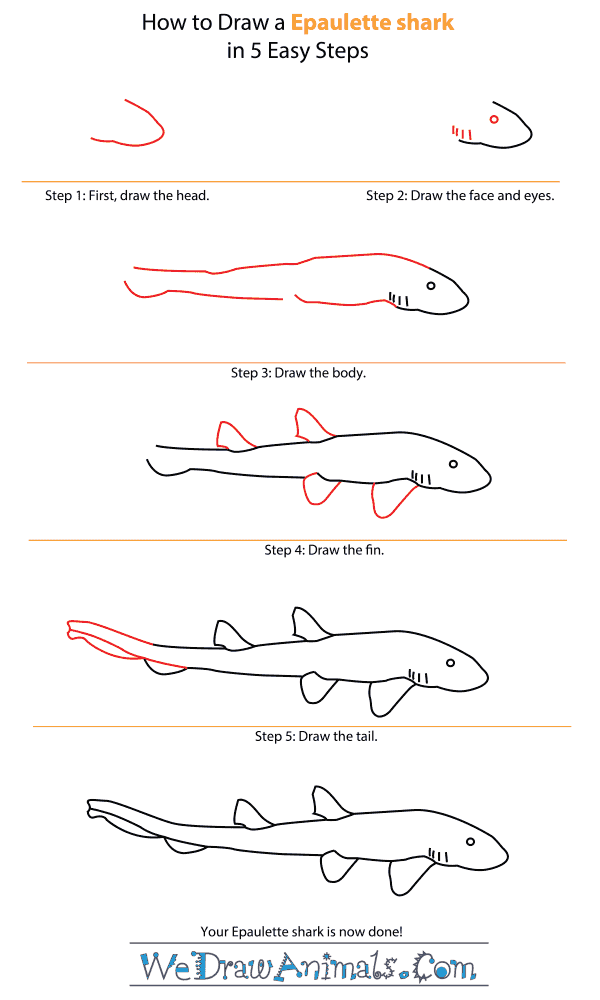In this quick tutorial you'll learn how to draw an Epaulette Shark in 5 easy steps - great for kids and novice artists.
The images above represent how your finished drawing is going to look and the steps involved.
Below are the individual steps - you can click on each one for a High Resolution printable PDF version.
At the bottom you can read some interesting facts about the Epaulette Shark.
Make sure you also check out any of the hundreds of drawing tutorials grouped by category.
How to Draw an Epaulette Shark - Step-by-Step Tutorial
Step 1: Let's begin with our Epaulette shark's head. Draw a lumpy half circle.
Step 2: Next draw a circle for the eye an three small, straight lines for the gills. This is how the shark breathes!
Step 3: Draw long, sloping lines that will make up the body of our shark. Be sure to leave an open space on the bootom for a fin. Did you know the Epaulette shark is also nicknamed the Walking Shark? It uses its fins to "walk" along coral reefs!
Step 4: Draw two fins on top and two on the bottom. Wide triangles will do the trick. The Epaulette uses these bottom fins to do its walking!
Step 5: The tail is a lot thinner than the rest of its body. Add detail with a fin on the underside of the tail.
Interesting Facts about the EPAULETTE SHARK
The Epaulette Shark is a member of the fish family and the scientific term for them is Hemiscyllium ocellatum. They get their name by the location of a design on their shoulder, as if they were wearing a military formal uniform fringed shoulder ornament. They are related to the carpet sharks and relatives of those with long tails. The slender light-brown body with a short head and broad fins are covered with dark-brown spots.
Did you know?
- This animal has a tail that is over 1/2 of its body length.
- The adult reaches a size of over 3 feet long.
- This species has a maximum habitat depth of 160 feet.
- They were first documented in the year 1788.
- There are over 60 rows of teeth in their mouth on average.
These fish are found in the warm shallow waters of Australia and New Guinea. When they become trapped in a tidepool, they can survive without fresh oxygen, and for over an hour with no oxygen at all. They spend most of their time walking on their fins along coral to eat small animals. This species is often domesticated, since they are a popular pet.






